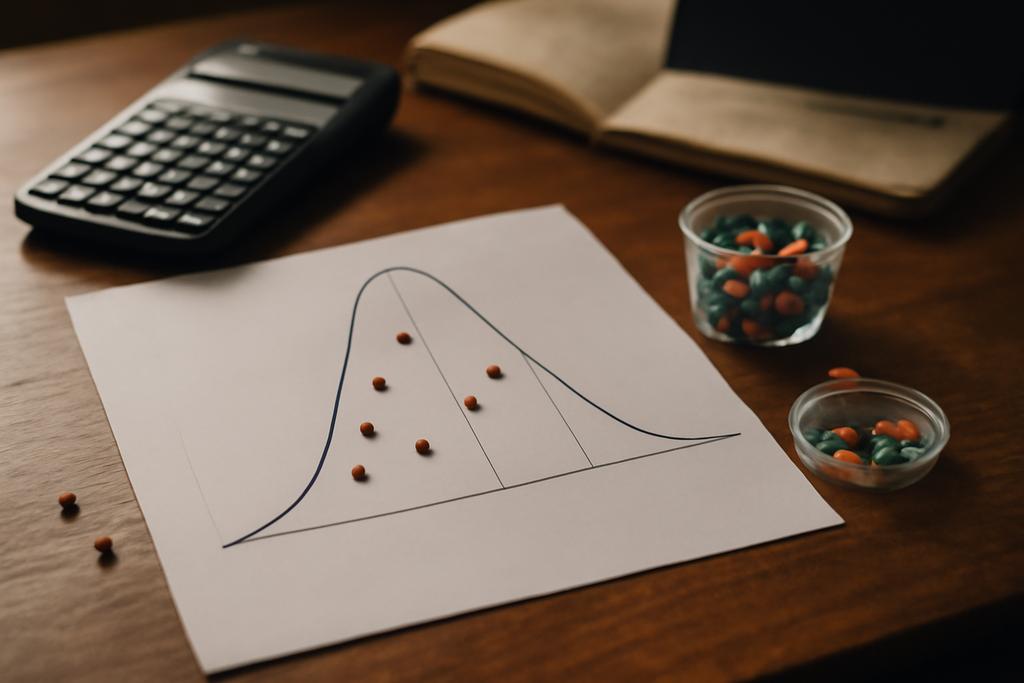Why rounding numbers is just the start
We all know that computers can’t store numbers with infinite precision. They round, truncate, and approximate. But what happens when the object we want to store isn’t a single number but a whole probability distribution? This is the challenge tackled by March T. Boedihardjo at Michigan State University in his recent mathematical study on the optimality of empirical measures as quantizers.
Probability measures describe how likely different outcomes are in a random experiment. For example, the distribution of heights in a population or the spread of pixel colors in an image. To work with these measures on a computer, we need to discretize them — that is, approximate them by a finite collection of points with assigned weights. This process is called quantization.
At first glance, the simplest way to approximate a probability measure is to draw independent random samples from it and use these samples as the discrete approximation. This empirical measure is easy to generate and store. But is it any good? Could we do better by carefully choosing points instead of relying on randomness?
Measuring the quality of approximation with Wasserstein distance
To answer this, Boedihardjo uses a mathematical tool called the p-Wasserstein distance. Think of it as a way to measure how far apart two probability distributions are, taking into account the geometry of the space they live in. For example, if two distributions put mass on points that are close together, their Wasserstein distance is small.
The goal is to find a discrete measure supported on at most n points that minimizes this distance to the original measure. This minimal distance is called the optimal quantization error. But what if we restrict ourselves to uniform quantizers, where each point has equal weight? And how does the empirical measure, which randomly picks points, compare to these optimal quantizers?
The surprising power and limits of randomness
Boedihardjo’s work reveals a nuanced picture. For the case where p = 1 (the 1-Wasserstein distance), he identifies a key obstruction called the steady decay obstruction. This obstruction arises because the error of the empirical measure decreases steadily as the number of samples grows, but the error of the optimal uniform quantizer can sometimes drop sharply when the number of points doubles. When such a steep drop happens, the empirical measure cannot keep up and falls short of optimality.
Yet, remarkably, this steady decay obstruction is essentially the only barrier preventing the empirical measure from being nearly optimal — up to a logarithmic factor in the number of points. This means that in many practical situations, just sampling randomly is almost as good as the best carefully chosen uniform quantizer.
More freedom, more obstructions
What if we allow non-uniform weights for the discrete approximation? Here, the empirical measure faces additional challenges. Boedihardjo introduces the low likelihood obstruction, which occurs when the original measure places small probability on regions that require many points for accurate approximation. Since the empirical measure samples randomly, it may not allocate enough points to these low-probability but complex regions, leading to suboptimal approximation.
He illustrates this with a clever example: imagine a distribution mostly concentrated at a single point but with a tiny uniform spread over a cube. The optimal quantizer can place points strategically in the cube to reduce error, but the empirical measure might miss sampling enough points there, resulting in a larger error.
Bridging the gap with classical quantization errors
To make these insights practical, Boedihardjo connects the expected error of the empirical measure to classical notions of optimal quantization errors studied extensively in the literature. His results provide explicit bounds that relate the empirical measure’s expected Wasserstein error to sums of optimal quantization errors at different scales, weighted by factors depending on the number of points and the Wasserstein order.
This connection allows researchers and practitioners to estimate how well random sampling will perform in approximating complex distributions, based on known geometric and probabilistic properties.
Why this matters beyond theory
Quantization is at the heart of many modern technologies: from compressing images and audio to training machine learning models on massive datasets. Understanding when simple empirical measures suffice and when more sophisticated quantizers are needed can guide algorithm design and resource allocation.
Boedihardjo’s work demystifies the performance of empirical measures, showing that randomness is often a surprisingly strong ally — but also warning us about its limits. His rigorous characterization of the obstructions to optimality and the precise bounds on approximation errors provide a roadmap for future research and applications.
In a world awash with data, knowing when to trust random samples and when to invest in careful design is invaluable. This study from Michigan State University, led by March T. Boedihardjo, sharpens our understanding of this delicate balance, blending deep probability theory with practical quantization challenges.










